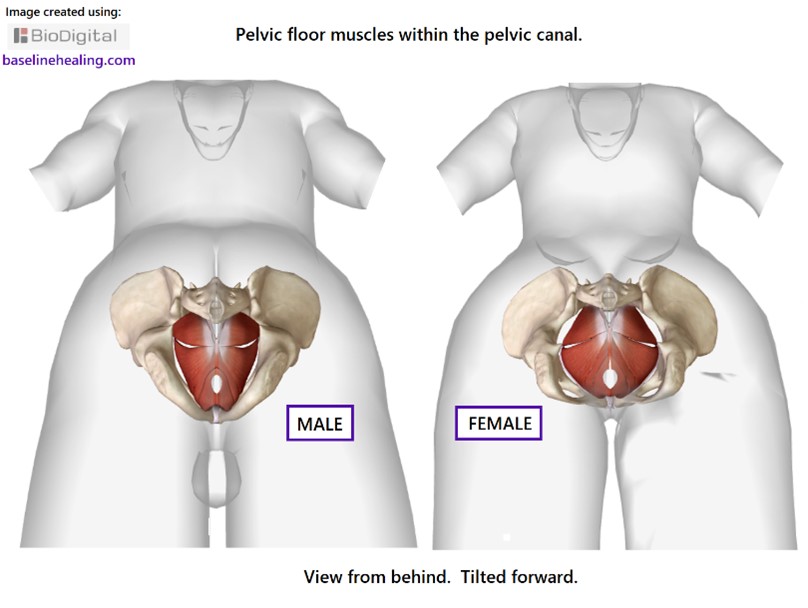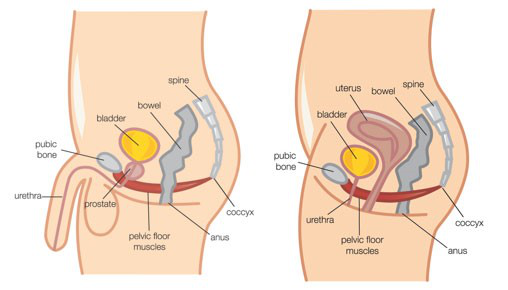
What is the Pelvic Floor?
The pelvic muscles support the bladder, bowel, and (for women) the uterus. When they contract, the organs are lifted and the openings to the anus, urethra, and (for women) the vagina. In this way, the muscles can relax and urine and feces can be released from the body. The pelvic floor is a “sling” of muscles, much like a hammock, that runs between the pubic bone in the front and the tailbone at the back. The urethra and the anus pass through the pelvic floor muscles. These muscles help you control your bladder, bowels, and sexual functions.
Factors like childbirth, aging, obesity, heavy lifting, and chronic coughing cause your pelvic floor muscles to weaken. Effects of weakened floor muscles include incontinence, uncontrollable flatulence, and/or painful sex.

How Does Pelvic Floor Training Help?
Kegel exercises (pelvic floor training) are designed to help strengthen your pelvic floor muscles. Kegel exercises should be done consistently (multiple times a day) to produce long-term results. After roughly 4-6 weeks, symptoms that you were experiencing should begin to go away or become significantly fewer in frequency. If you have any questions about the details of these exercises, need any help, or find out if they are the best option for you, please feel free to schedule an appointment with our highly-trained medical care providers!
A Few Helpful Tips
- Do Kegel exercises 3 times daily
- Make sure your bladder is empty and then stand, sit or lie down. Changing positions will make the pelvic floor muscles the strongest.
- Tighten your pelvic floor muscles, hold tight and count to 8.
- Relax the muscles and count to 10.
- Repeat 10 to 15 times
- Make sure you’re not tightening your stomach, thigh, buttock, or chest muscles.
- Do NOT perform Kegel exercises while you urinate. This can weaken your pelvic floor muscles and cause damage to multiple parts of your urinary tract.
- Stay optimistic and be patient.
After about 4 to 6 weeks, you should feel better and have fewer symptoms. Consistency is important. You don’t have to increase the number of Kegel exercises you do over time. In fact, overdoing it can lead to straining when you urinate or move your bowels.
Give us a call or submit a request to schedule an appointment today with one of our experienced healthcare providers so they can discuss pelvic floor training with you and answer any questions you may have about Pelvic Floor Training!
